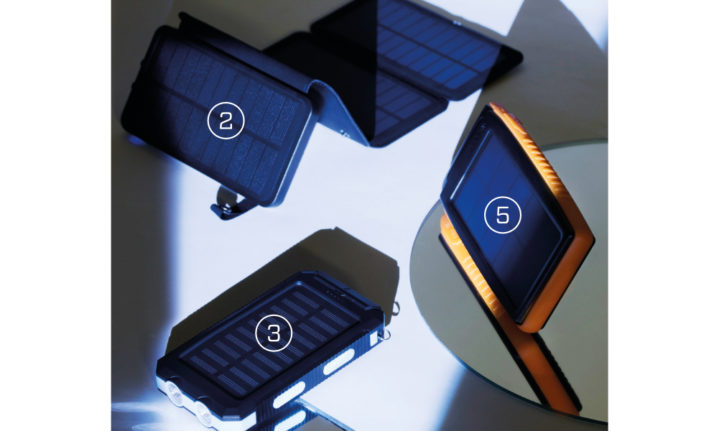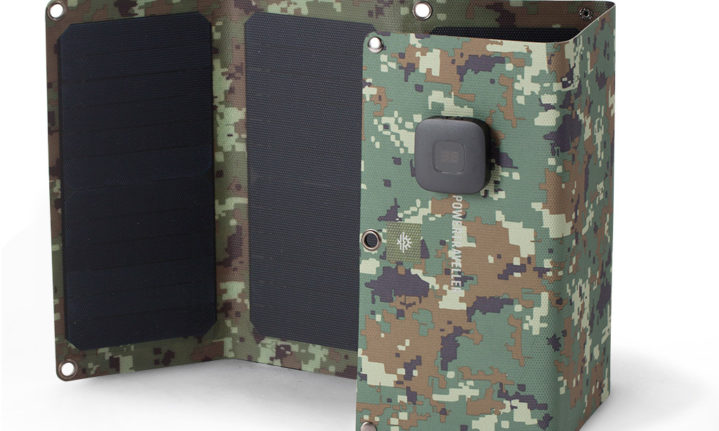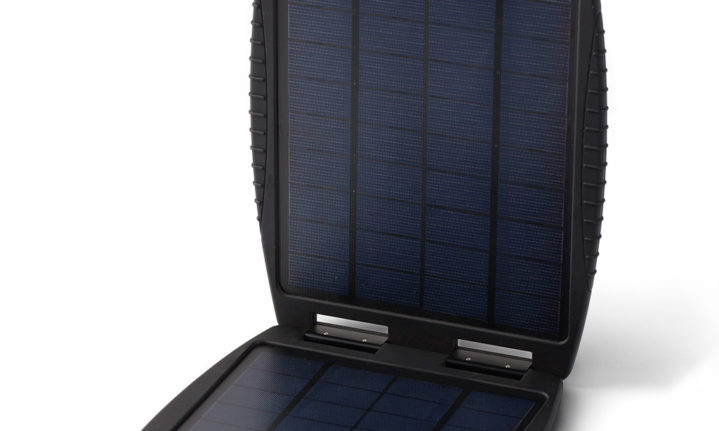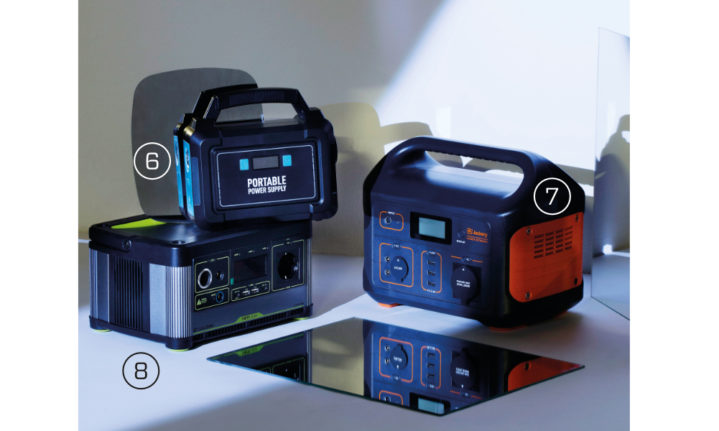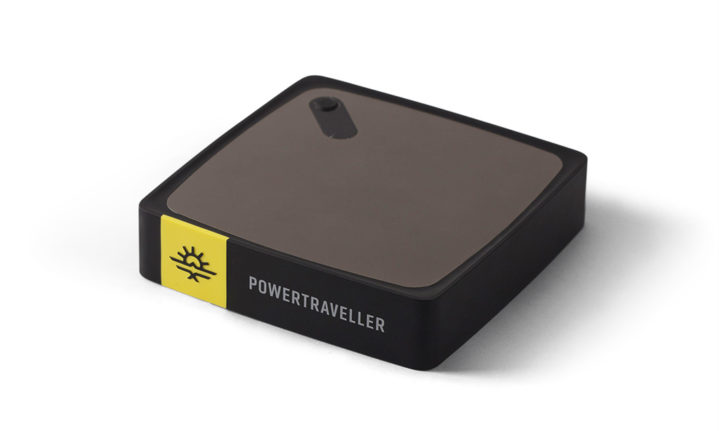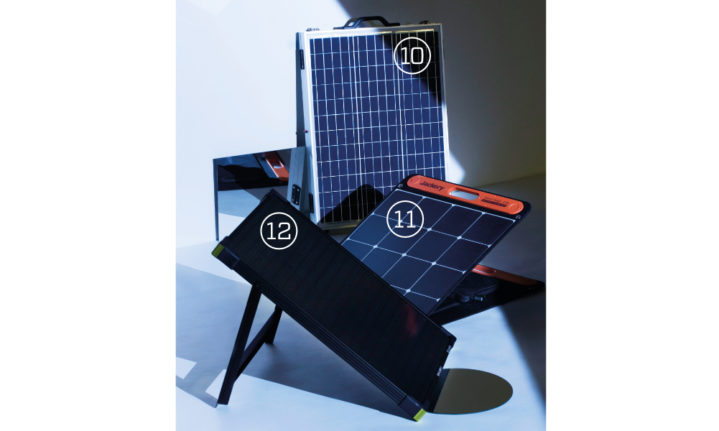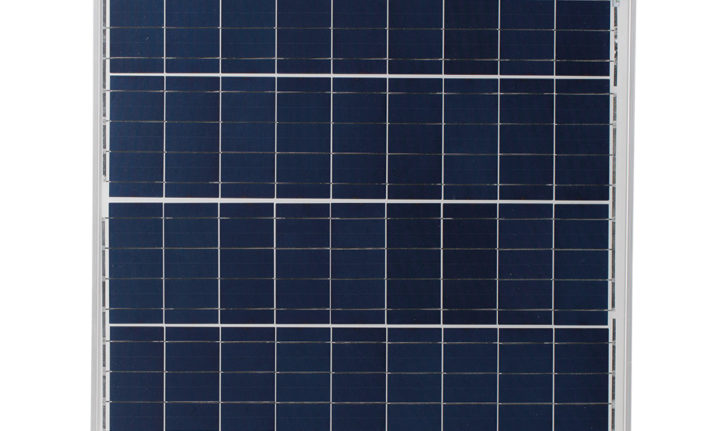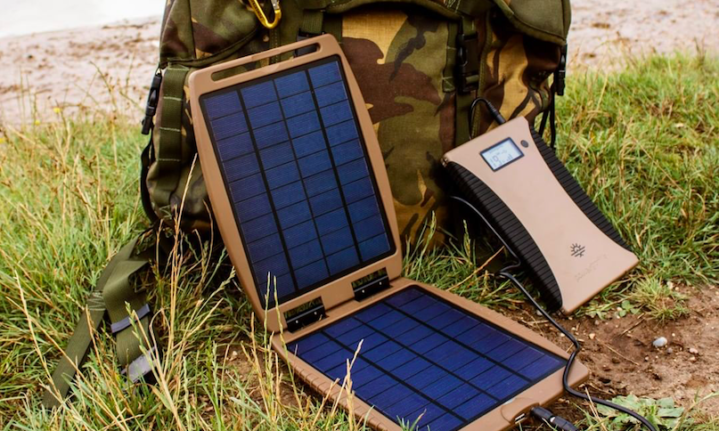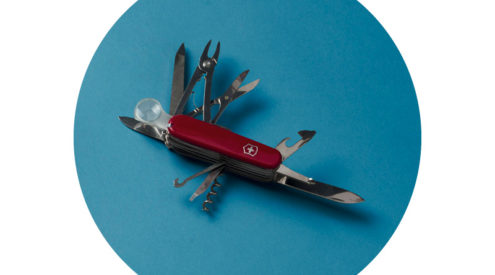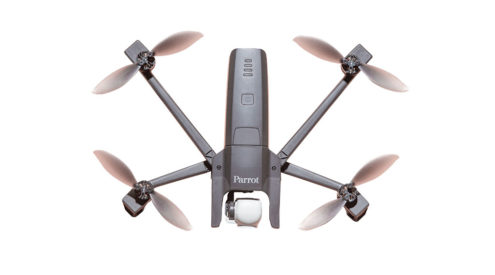Solar power and batteries have come a long way in a short time, making it easier than ever for hikers and campers to head off-grid, says Gear Editor Matthew Sterne.
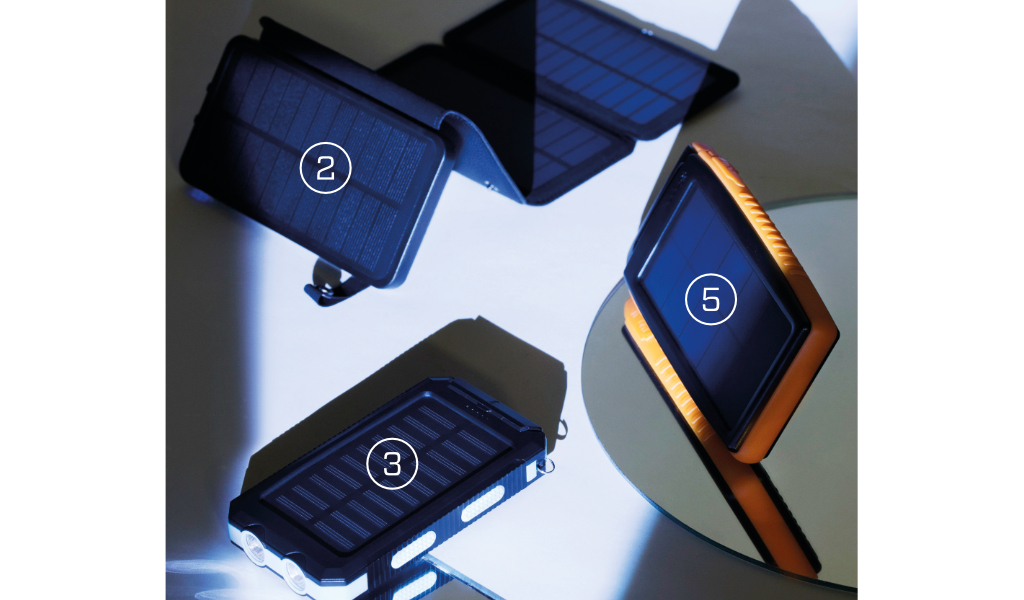
For Hiking
1 | Powertraveller Tactical Falcon 28E
R3 780
sustainable.co.za
Weight: 508g
Powertraveller products have been used by scientific research groups in Antarctica and they have a product line for extreme adventurers, which seem like handy credentials. The Tactical Falcon 28E can charge most 5V devices, including tablets, smartphones, GPS, action cameras or powerbanks, but it has no battery itself so can’t store power. This isn’t ideal but its lightweight frame and four powerful solar panels make up for that. There are five metal eyelets on the edges so it can be attached to your backpack and charge your devices while you walk. The 28-watt solar panel can power a smartphone in two to five hours, depending on the level of sunlight.
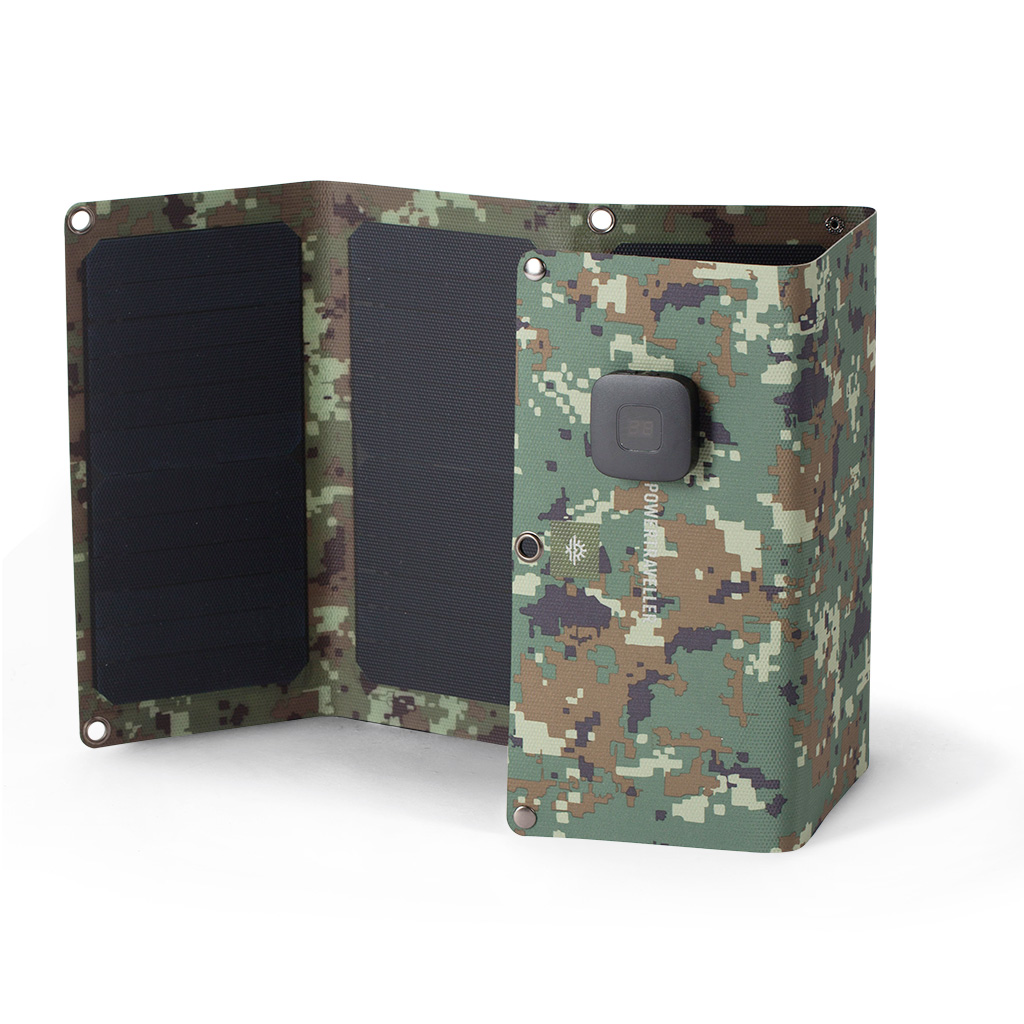
2 | Red-E RSP80 8 000MAH powerbank with solar panel
R899
outdoorwarehouse.co.za
Weight: 388g
Charging time: 4.5–5 hours
Capacity: 8 000mAh
The best feature of this powerbank is that it has four solar panels, which gives it a larger area to absorb the sun’s rays and allows it to charge quickly. It folds up into the size of
a big cell phone and has two outputs for powering two small items, such as a phone or action camera, at once. It should be able to absorb enough sun, given good conditions, to keep your phone or camera going through-out a hiking trip.
3 | Solar Power Bank
R250
takealot.com
Weight: 218g
Charging time: 1–2 days
Capacity: 5 000mAh
The good? It’s super affordable. The bad? It takes a while to recharge as the panel is small, although to charge via electricity only takes six hours. The unusual? It has a tiny compass on the back just in case you need to reorientate yourself while you recharge. One day of good sunlight should power your phone once.
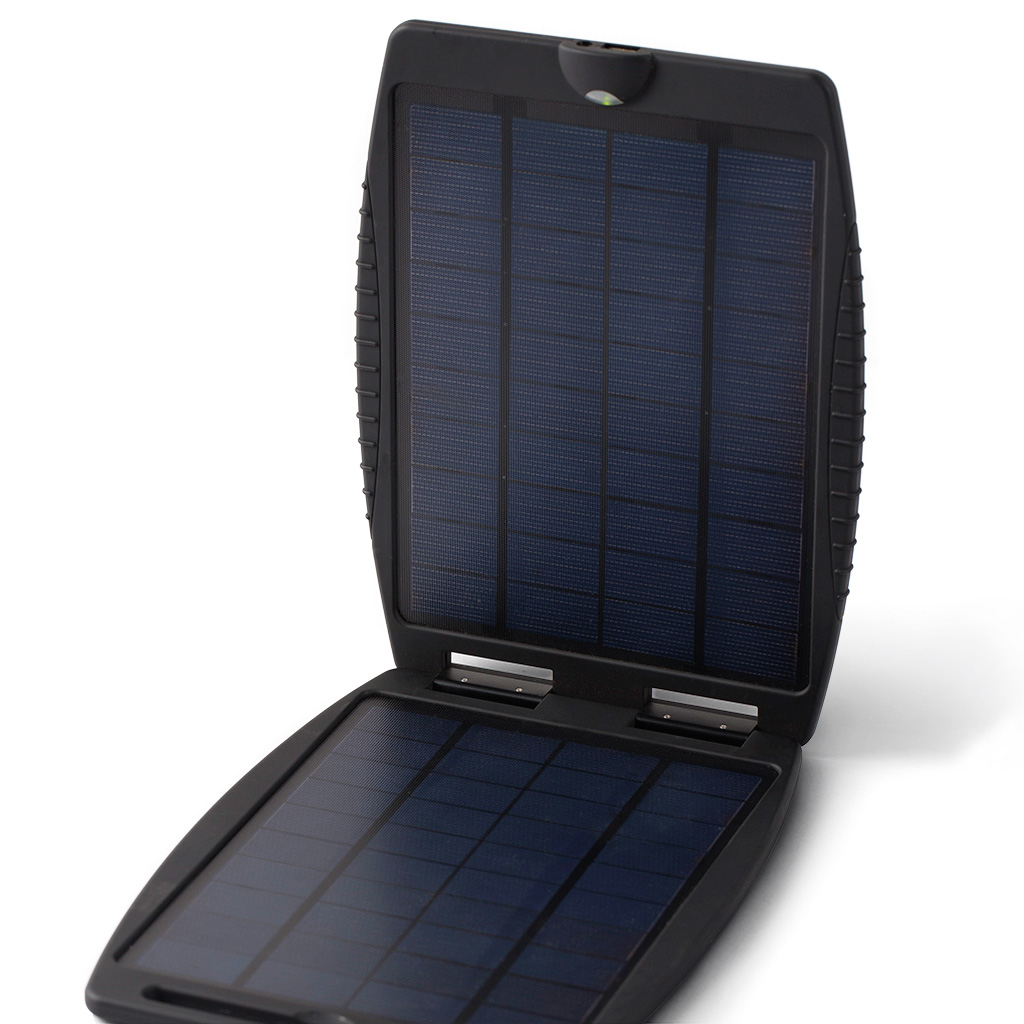
4 | Powertraveller SolarGorilla
R4 320
sustainable.co.za
Weight: 848g
A similar concept to the Tactical Falcon 28E, the Solargorilla is primarily designed to be used in conjunction with a power bank such as the Phoenix 90 (also featured). The Falcon will take eight to 16 hours to charge the Phoenix 90, while the Solargorilla will power it in 12–24 hours, depending on the sunlight. That said, it can charge laptops with a power rating of 40W and under, directly from the sun. The clamshell design of the two solar panels folds together nicely and has a green LED light which indicates the strength of the charge.
5 | RavPower Solar 15 000mAh powerbank
R999
capeunionmart.co.za
Weight: 390g
Charging time:
Up to 10 days
Capacity: 15 000mAh
The large battery on this hardy device means it has enough juice to charge an iPhone 11 thrice, a Galaxy S10 twice and an iPad Pro once. But it also means it takes a long time to charge its battery solely through the single panel. The week in which I had it was overcast and it responded slowly to the sun. It’s best utilised by charging it fully off mains electricity before a trip and using 10-15% of it a day, which can be replenished via the sunlight.
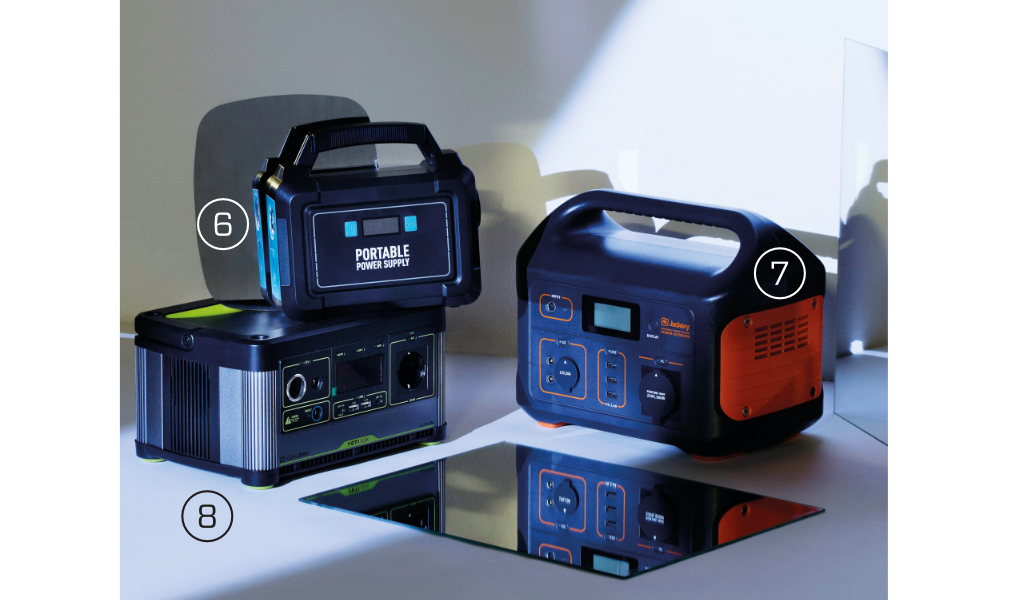
For Camping
6 | ATP-168H Portable Power Supply
R3 900
These power boxes are like silent, lighter, more eco-friendly generators. The only difference is their limited power supply. This one has 18 650 lithium batteries, charges electronically in seven hours and has a battery capacity of 148WH. That’s the important number, it means it can charge a one-watt device 148 times in an hour, or a smartphone 12 times off a single charge.
7 | Jackery Explorer 500 Portable Power Station
R11 149
Jackery makes a range of battery pack options, from those designed for iPhones and iPads, to the much more powerful, such as the Explorer 500. Technical specs match that of the Yeti 500X point for point. Both can be powered by solar panels, weigh around 6kg, have a battery capacity of around 500 watt hours and similar battery lifespan – 500 cycles at 80%. There are two major differences however: the Jackery has more juice and produces more continuous power (500W) vs only 300W from the Yeti, whereas the Yeti has much better solar capabilities and can recharge twice as fast.
8 | Goal Zero Yeti 500X Lithium Power Station
R16 065
Designed with the weekend warrior in mind, this tool-box-shaped portable power station is perfect for longer camping trips or on-the-go power in case of load shedding. It can power a wide range of devices as it’s equipped with four different port options, allowing it to charge everything from phones (42 times) to DSLR cameras (28 times) and portable fridges (up to 20 hours). The 500X can be charged from the sun with portable solar panels and features an MPPT charge controller to ensure an efficient charge.
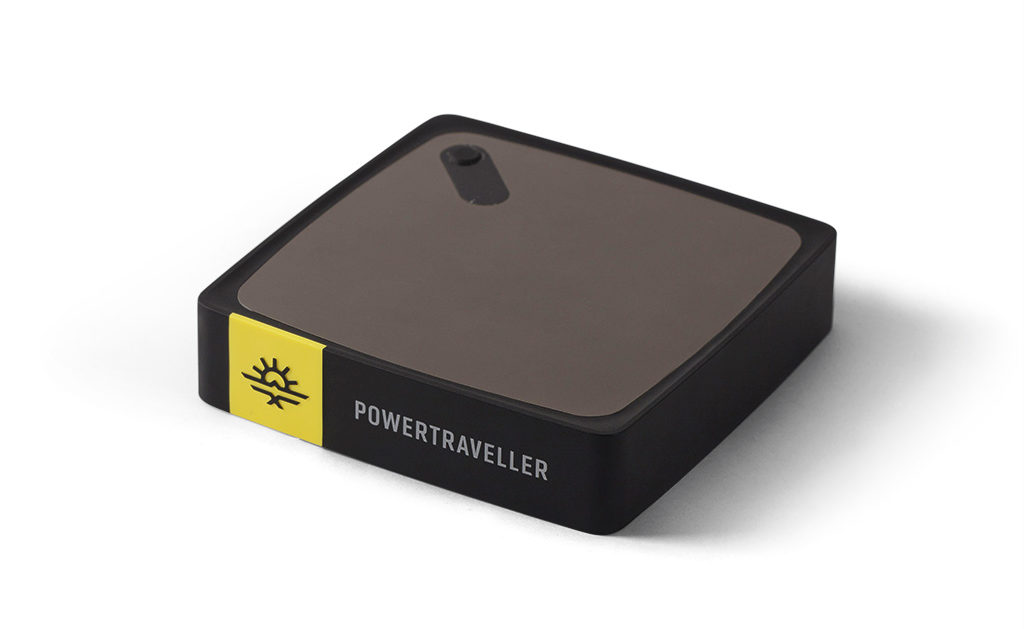
9 | Phoenix 90 multi-voltage charger
R4 320
If the powerbank you usually use spent its summer break injecting steroids into its wiry veins you’d get this contraption. It’s the size of the CD case people used to have in their cars when Blink 182 were popular but, at 695g, is more hefty. Intended for multi-day hikes as well as camping, the 22 500mAh internal battery can power a smartphone about eight times and an action camera 12 times off a single charge. What I particularly liked about this multi-voltage power pack was the LCD screen displaying the output port’s current voltage and percentage of internal battery remaining.
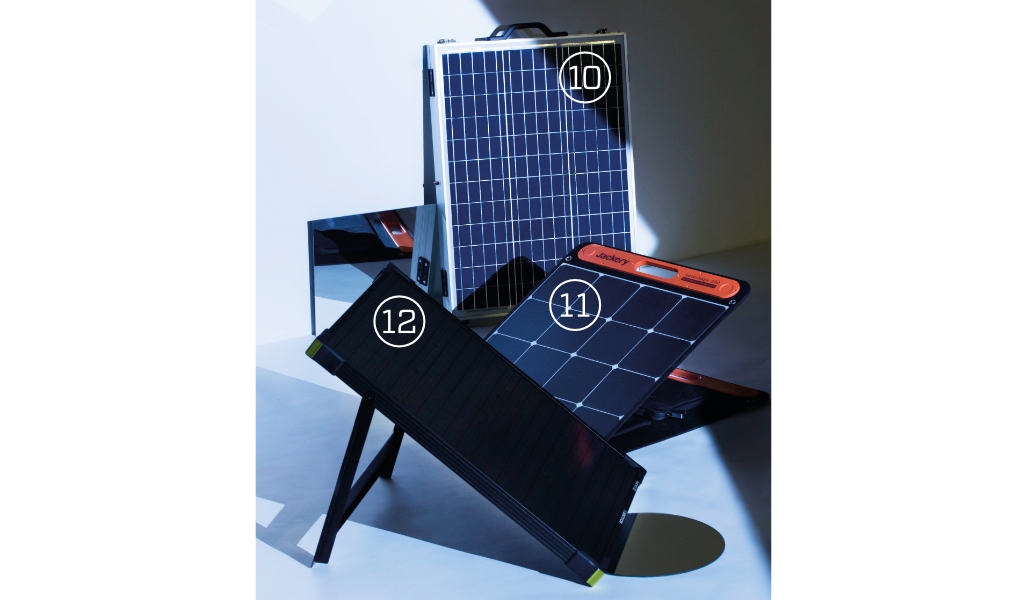
10 | Roma foldable solar panel kit – 150W
R4 650
For some reason this kit makes me think of a Kgalagadi camping trip. It’s suited for a setup with a 105Ah battery (R2 500) running a standard size fridge (around 50L) and some LED lights. The kit includes a three-part foldable solar panel, cabling with fitted connectors, a Victron PWM solar charge controller and a protective canvas cover. The kit can be upgraded to include extension cables and an MPPT charge controller (to optimise charging). The panel can produce 150 watts per hour and will get close to 800 watts per day, almost enough to power a microwave for an hour.
11 | Jackery 100W Portable Panel
R6 163
The lightest panel of the lot (4.1kg) is foldable and locks together with magnets, making it super portable. There are two built-in kickstands that let you adjust the angle to maximize sun exposure, which keep it quite stable. A large, zippered pocket is sewn into the back of the panel. Inside is a charging hub with a permanent, integrated three-foot DC 8mm output cable. It will charge a Jackery 500 in direct sunlight in 8–10 hours. The secret to its solar success is that its cells are particularly efficient (23%) at converting the sun’s rays into energy.
12| Solar Panel Foldable 155W
R2 195
For the non-scientists out there (me), let’s keep this simple: the solar panel connects to a charge controller (R450), which connects to a deep-cycle battery. Connecting a solar panel directly to a battery could damage the battery, so the charge controller prevents that. The title of this product is misleading as the maximum rated power is 144W instead of the claimed 155. Both this and the Roma weigh around 12.5kg.
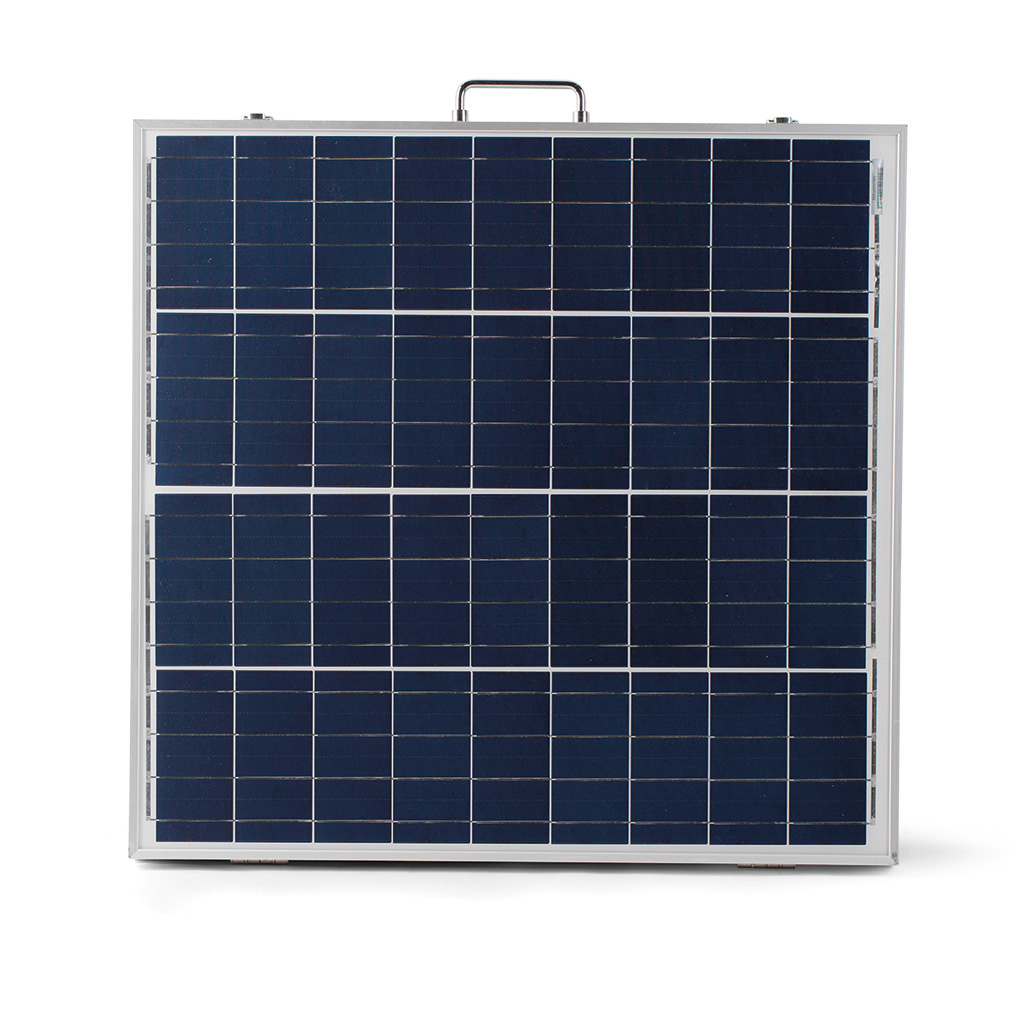
13 | Goal Zero Boulder 50 Portable Solar Panel
R3 037
As with all of these panels, the Boulder 50 does not hold a charge but can be paired with the Yeti 500X, which it charges in 12–24 hours. It has an integrated kickstand to get an optimal angle to the sun. It’s pretty light (5.6kg) and folds up thin and compact.









